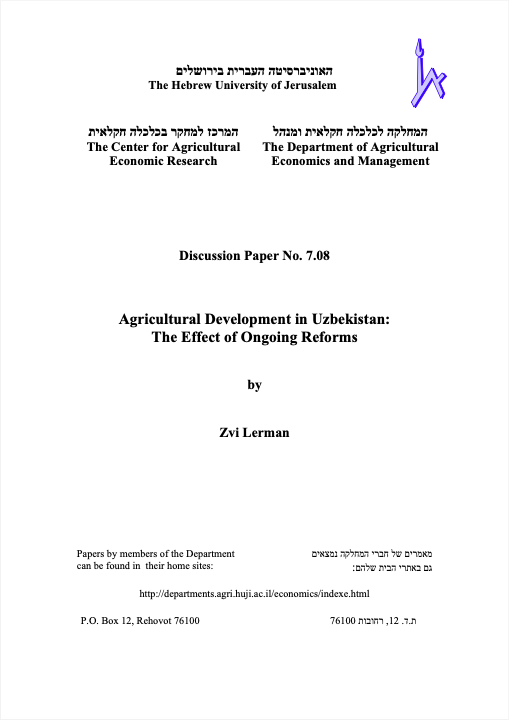Agricultural Development in Uzbekistan: The Effect of Ongoing Reforms
Agricultural transition in Uzbekistan, as in all CIS countries, is driven by a process of land reform, which involves redistribution of land among producers and concomitant changes in farm structure. In this article we review the process of land reform since Uzbekistan’s independence and examine its impacts on agricultural growth and rural family incomes. The analysis is based on official statistics and data from a farm-level survey carried out in 2007.



